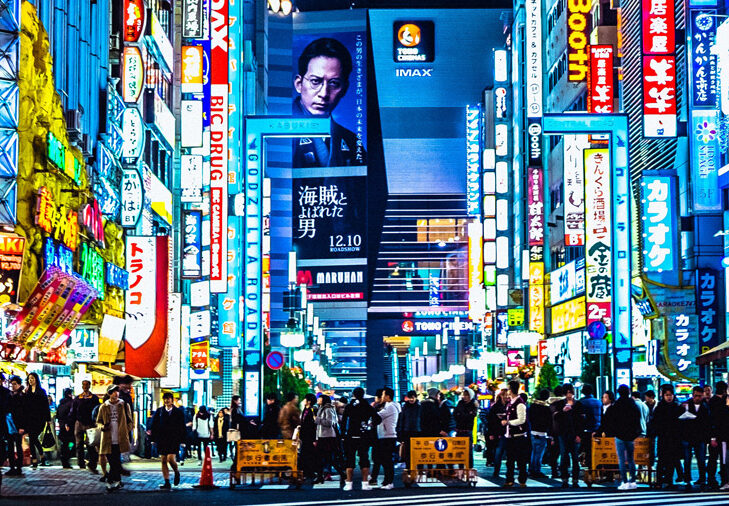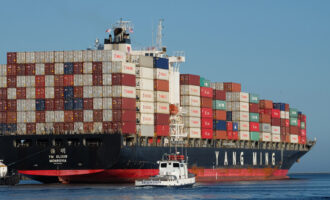
Connectivity: The new international conflict
The world’s population could reach its peak at the end of the current century, amassing total inhabitants of almost 11 billion. A 2019 projection, from the population division of the United Nations Department of Economic and Social Affairs, projects the global populace will continue to rise rapidly over upcoming decades, but with growth varying greatly by region. The report, World Population Prospects 2019: Highlights, predicts India will assume the mantle as the world’s most populous country by around 2027. A growing number of countries’ population will begin to decline, due to sustained low levels of fertility. China’s population, for example, is projected to fall by 31.4 million in 2050.
Despite a downward trend in China, and increasingly negative sentiment relating to China’s economic indicators, Asia is always going to be home to the majority of the world’s inhabitants. The region will continue to grow larger, and richer, as it becomes more integrated.
 Parag Khanna is an advisor to the United States National International Council Global Trends 2030, and a frequent lecturer on global developments, systemic risks, technological disruptions and market interest strategies. Speaking at the Global Maritime Forum’s 2019 Annual Summit in Singapore last October, Khanna provided his view on Asia, “the most diverse heterogeneous region on earth.”
Parag Khanna is an advisor to the United States National International Council Global Trends 2030, and a frequent lecturer on global developments, systemic risks, technological disruptions and market interest strategies. Speaking at the Global Maritime Forum’s 2019 Annual Summit in Singapore last October, Khanna provided his view on Asia, “the most diverse heterogeneous region on earth.”
While China continues to be the leading Asian nation, too often the Asia story is entirely China-centric, says Khanna. Yes, China is the largest and most powerful country in the region, but Asia is much bigger than China, he says. Three and a half billion Asians are not of Chinese extraction. Two and a half billion are from the younger and more dynamic societies of South and Southeast Asia.
Khanna highlighted a “fourth wave of growth” in Asia. Consumption in Asian nations such as Pakistan, India and the ASEAN countries is growing rapidly, and internal and external dynamics are beginning to propel these South and Southeast Asian countries forward. Rapid industrialisation in Japan and the emergence of the Asian ‘Tigers’ (South Korea, Taiwan, Hong Kong, and Singapore) led the economic growth in Asia, followed by the rise of China. However, a new wave of prosperity is emerging. Supply chains are moving out of China and into these fourth wave economies, says Khanna. If these regions grow at just half the rate of China over the last 40 years, they will equal China’s current GDP within the next 10 years. Asia is taking centre stage, says Khanna.
Admittedly, many South and Southeast Asian countries are home to rampant poverty. An estimated 36 million people in Southeast Asia continue to live below the poverty line, with almost 90% of these individuals located in Indonesia and the Philippines. Physical infrastructure in many regions is deficient, and technology standards remain extremely low. However, with the correct strategy, stimulus and application of investment there is a significant opportunity for growth in these Asian nations.
Khanna is an expert in geopolitics and a frequent contributor on the popular “Ted Talks” where “ideas work spreading” from thought leaders are shared with millions of viewers throughout the globe. There has been a significant shift in geopolitics. However, irrespective of the increase in protectionism we are observing, globalisation will reign supreme, says Khanna.
Connectivity is the new international conflict, the medium we are fighting over, he says. Countries are striving to become more connected — via trade agreements that offer a commercially frictionless environment for goods. Leading powers are exerting their influence to improve connectivity and their supply chain. Despite everyone acting in their own self-interest — continuing to expand connectivity creates resilience, says Khanna.
Before the Industrial Revolution, the Asian economy accounted for nearly 60% of global GDP. In years gone by the Asian nations splintered from one another and Western economies enjoyed much higher growth. Over the last 30 years, the Asian countries have started to stitch themselves back together and rekindle those old silk roads, says Khanna.
Asian countries trade more with each other than the rest of the world. Intra-regional trade now accounts for more than 60% of Asian trade, he says. Only Europe has a greater share of internal trade. Irrespective of what the lines on the map suggest, Asia is becoming one and integrating more than ever before. In decades past Asia used to produce for the west. Now the rest of the world is producing for Asia, says Khanna.
 The maritime industry plays a critical role in creating a world that is more connected. Connectivity plays out via access to key nodes, ports and trade hubs. In the past, blockages of vital trade routes have resulted in soaring oil prices and the risk of territorial maritime conflict. A more distributed supply and global infrastructure for the movement of goods enables greater robustness. “With multiple pathways to each destination comes resilience,” says Khanna.
The maritime industry plays a critical role in creating a world that is more connected. Connectivity plays out via access to key nodes, ports and trade hubs. In the past, blockages of vital trade routes have resulted in soaring oil prices and the risk of territorial maritime conflict. A more distributed supply and global infrastructure for the movement of goods enables greater robustness. “With multiple pathways to each destination comes resilience,” says Khanna.
Five of the top 10 most connected countries are in Asia, according to the liner shipping connectivity index developed by UNCTAD. China is the most connected country and has improved its index by 51% since 2006.
China is highly active in financing upgrades to infrastructure to improve the efficiency of global and regional trade and to gain access to critical nodes, the gateway to key geographies. Is China acting as a uniting force in the Asian region? For many, the investments signify another wave of the old silk road, building connectivity first and foremost. Asian and Middle Eastern countries are the strongest beneficiaries of Chinese investment. For others, the investment is a plot by China to dominate Asia and the globe.
China’s Belt and Road Initiative (BRI), announced in 2013, is the largest coordinated infrastructure investment programme ever undertaken. Investments in 152 countries and international organisations include overland routes for road and rail transportation and sea routes in a “bid to enhance regional connectivity and embrace a brighter future.” The improved physical infrastructure roughly aligns to the old Silk Road network of the trade routes and involves an estimated investment of USD4-8 trillion. This ambitious undertaking is due for completion in 2049. The BRI will return Asia to a natural state of multipolarity — a respectful degree of autonomy among Asia’s proud civilisation, suggests Khanna.
The high-profile United States and China trade dispute is also contributing to the diversification of supply chains throughout Asia-Pacific. Asia is reinforcing its own ecosystem and creating ever stronger trade relationships in Asia. China has cut tariffs to everyone on earth except the United States, says Khanna, with China’s surplus with BRI partners dropping to near zero. Asia is becoming increasingly self-sufficient every year.







